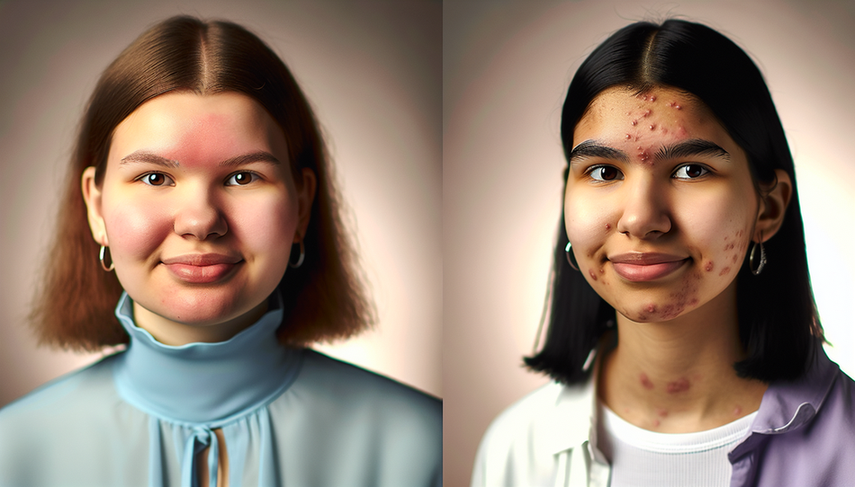Rosacea vs. Acne: Differential Diagnosis and Topical Treatment for Facial Erythema and Papules

The management of facial lesions is a common challenge in dermatological practice. Two of the most prevalent conditions affecting facial skin are rosacea and acne. Although they may present similar features, such as facial erythema and papules, their etiology, pathogenesis, and treatment differ significantly. This article explores the key differences between these two conditions and offers an approach for their differential treatment.
Differential Approach: Rosacea vs. Acne
Rosacea is a chronic inflammatory disease primarily affecting adults. It is characterized by facial erythema, telangiectasias, papules, and pustules, and may be associated with ocular symptoms such as conjunctivitis and blepharitis. A reported case of infantile rosacea highlights the importance of differentiating it from other conditions like acne and perioral dermatitis [1].
On the other hand, acne is a common condition in adolescents and young adults, characterized by comedones, papules, pustules, and, in severe cases, nodules and cysts. Unlike rosacea, acne is more related to the obstruction and inflammation of hair follicles due to excessive sebum production and colonization by Propionibacterium acnes.
Differential diagnosis is crucial, as conditions such as perioral dermatitis and lupus miliaris disseminatus faciei can mimic the manifestations of rosacea and acne [2][3].
Treatment and Dermatological Care
Topical treatment is a cornerstone in the management of both conditions. For rosacea, topical antibiotics such as metronidazole and ivermectin are effective, while calcineurin inhibitors may be useful in resistant cases. In acne, topical retinoids and antibiotics are first-line treatments. In severe cases, the use of oral isotretinoin may be considered.
Additionally, the management of rosacea may include avoiding triggers such as sun exposure, stress, and certain foods. The use of physical sunscreens is crucial to prevent exacerbations. In acne, the focus is on reducing sebum production and inflammation, as well as preventing scarring.
Conclusions
Differentiating between rosacea and acne is essential for effective treatment. Although they share some clinical characteristics, their management requires a specific approach based on the underlying pathogenesis. Accurate identification and appropriate treatment can significantly improve the quality of life for patients affected by these common facial conditions.
Referencias
- [1] Rosácea infantil.
- [2] Perioral dermatitis.
- [3] Lupus Miliaris Disseminatus Faciei: A Report of a Rare Case and Its Differential Diagnosis.
Created 6/1/2025
